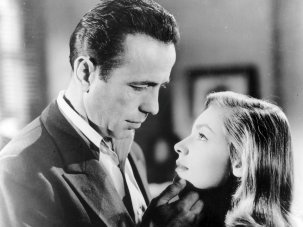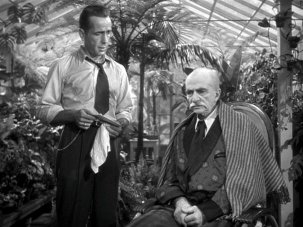from our February 2011 issue
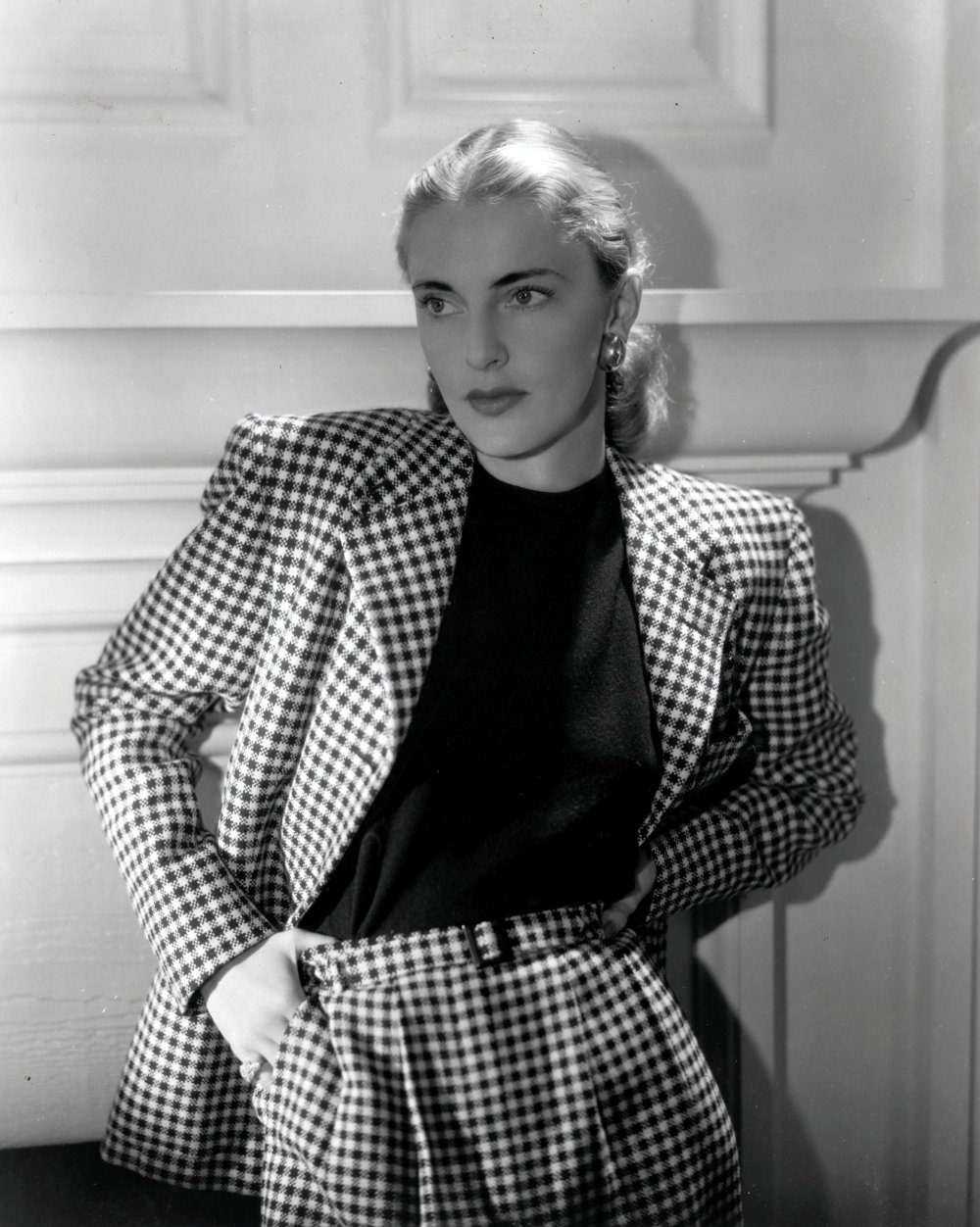
Slim Hawks, née Nancy Gross
The Slim years were very rich. You may decide they were the best in the career of Howard Hawks. In which case doesn’t his wife Slim Hawks deserve some credit? We are talking about 1939 to 1946, which means: Only Angels Have Wings, His Girl Friday, Sergeant York, Ball of Fire, The Outlaw (he started it before Howard Hughes dropped him), Air Force, Corvette K-225 (which he produced), To Have and Have Not, The Big Sleep and Red River, which was shot in the autumn of 1946, though not released until 1948. Not a bad war.
Nancy Gross met Howard Hawks on 30 August 1938. She was 20; he was 42. She was born in Salinas, California – East of Eden country – and her father owned several fish canneries in Monterey. She was extraordinarily beautiful and a convent girl, but when the time came, adventure took her to the Furnace Creek Inn, a classy resort in Death Valley, not far from the Nevada border. There she met movie stars: William Powell (he called her the “Slim Princess”), Warner Baxter, David Niven, Cary Grant. Next thing, she was invited to San Simeon and became friendly with William Randolph Hearst and Marion Davies. Very soon she was in Los Angeles. On that August day, she had been to the fights with two men – actor Bruce Cabot (“seriously dumb”, she said) and Cubby Broccoli (“truly intelligent”). After the boxing they went to the Clover Club, the most fashionable gambling nightclub in town.
She was dancing with Broccoli when a tall, grey-haired, immaculately dressed man passed by – it was Howard Hawks, just a few months off Bringing up Baby (a flop in its day). He was known as the ‘Silver Fox’, and he was watching her. Watching would prove to be Howard’s most loving form of attention. He asked her to dance and then he gave her the usual line: so, she wanted to be in movies? “No,” she said, and she meant it – though in the end she would affect Hawks’s work more than any other woman. Hawks kept a little black book with the names and numbers of pretty women who did want to be in pictures, and he called on them sometimes. He asked Nancy to come up to his house for a swim next day, and she accepted. They were soon in love.
Hawks had been married since 1928 to Athole Shearer, the sister of Norma Shearer and Douglas Shearer, the sound recordist at MGM. It was Athole’s second marriage (she had a son, Peter, by her first husband). But Athole was not always well. Norma would say that her sister had first been disturbed by so many Canadian guys they had known (they were from Montreal) being killed in the Great War. Athole was depressed. She took to her bed. She heard voices or ghosts.
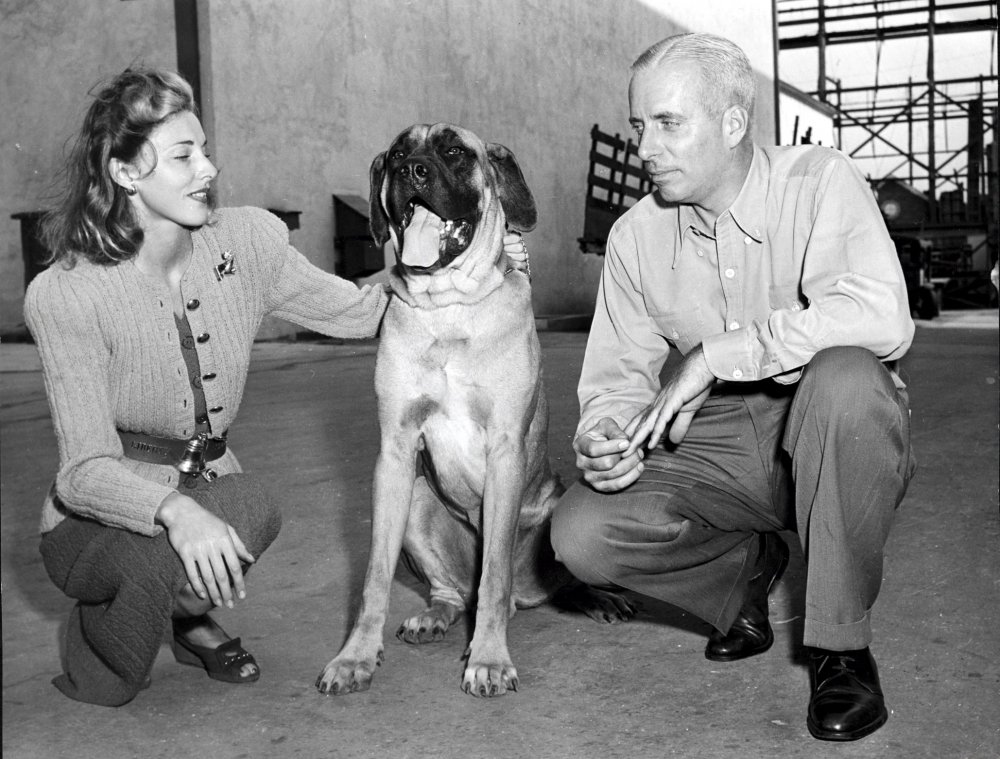
Slim and Howard Hawks
Credit: Howard Hawks Papers, Brigham Young University
Athole was very pretty and she appeared in a few films; she’s at the dance in D.W. Griffith’s Way Down East (1920). In 1927 Norma Shearer married Irving Thalberg, so Hawks’s marriage to her sister saw him joining Hollywood society. His biographer Todd McCarthy is properly sceptical of the suggestion that Howard didn’t know about Athole’s condition. They had two children, Barbara and David, but by the time Howard met Slim he told her his wife “was ill a great part of the time”. What did “ill” mean, especially when California law forbade the divorcing of certified spouses? Athole’s illness had not gone that far.
You may feel this is more gossip than film commentary, but the way Howard Hawks looked at women, or fantasised them into movie life, is at the heart of his work. Athole Hawks lived until 1985, spending much of her last years in institutions. On Wikipedia she is said to have been “bipolar”, but that diagnosis came along later and is fashionable now to the point of stupidity. It’s clear she was disturbed some of the time (but not all of it) – and a husband’s infidelity can assist that. We know that Hawks had affairs – with Ann Dvorak and Joan Crawford, for example – and it’s evident that he was in the habit of ‘discovering’ young women as radiant as Frances Farmer.
Hawks gave us some of the most arresting women in American film – beautiful, smart, brave and seemingly ‘independent’, yet ultimately obedient to the man’s dream. In His Girl Friday (1939), Hildy Johnson (Rosalind Russell) is on the point of marrying someone else, but her ex, rascal newspaper editor Walter (Cary Grant), wins her back. These women are often loners, like Marie ‘Slim’ Browning (Lauren Bacall) in To Have and Have Not (1945), who contrives somehow to be alone on Martinique in the middle of war, under the guise of an actress no more than 19. This ‘Slim’ is a million miles from Hemingway’s Marie in the novel, and famously Hawks warned Humphrey Bogart that Bacall would outdo him in insolence. Well, yes, if it’s cross-talk foreplay you’re interested in (and Hawks was wild for it), but the girl’s independence dwindles away until she’s ready to soft-shoe dance out of Frenchy’s place and go with her Harry into the new dawn.
To Have and Have Not comes on sultry tough, and we all know the film’s famous lines, with Bacall holding up a doorway in case it faints. It’s a film with marlin fishing, gunfire at sea and creepy Vichy cops (especially Dan Seymour), but it’s as complete and serene a fantasy as anything Fred Astaire ever made – and it does keep edging towards being a musical, led by the droll Cricket (Hoagy Carmichael). For a moment Bacall had the reputation of a slinky noir girl with an acid tongue.
Of course, this is the central film of the Slim years. There is, by now, an unshakeable legend (and I’m not seeking to dislodge it) that, one day at home, Slim saw a picture of a pre-Bacall Betty Joan Perske in Harper’s Bazaar – the fashionably dressed young woman outside a blood bank, with the look of a vampire – and tossed the magazine over to Howard. Maybe as the magazine was in mid-air the wife had second thoughts. Did she guess that Howard might take a fancy to her discovery? But Slim Hawks had great instincts about film, and perhaps she divined Perske’s promising look when Howard might not have seen it.
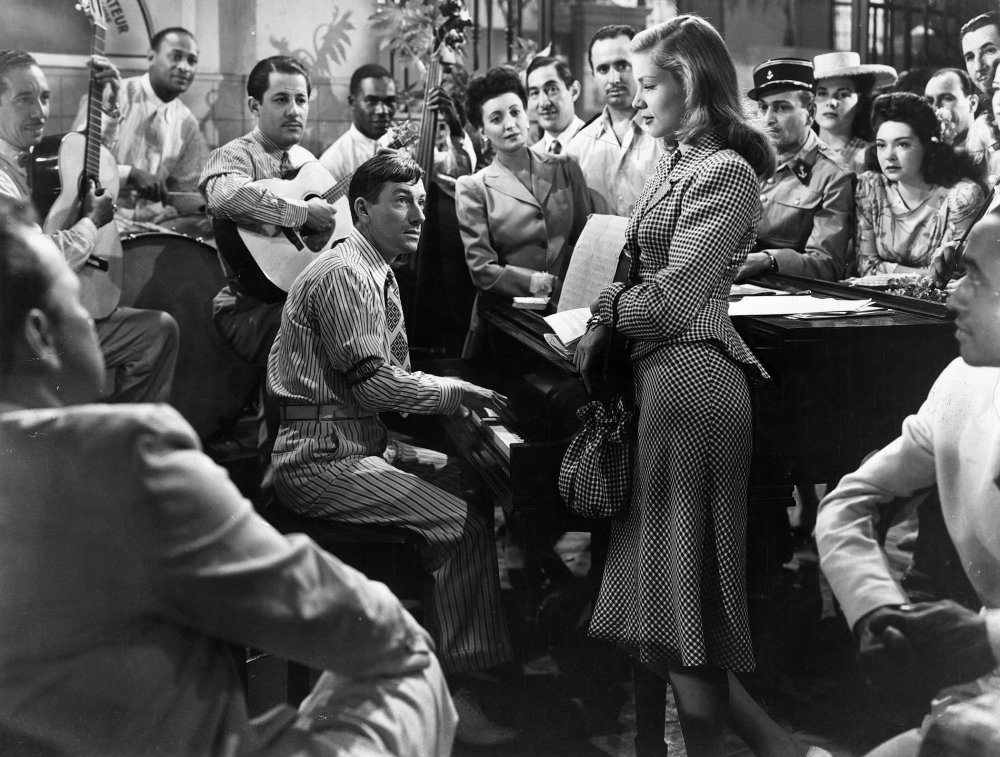
To Have and Have Not (1945)
The movie was under way from that moment, and the machinery of Hollywood’s dream surged into high gear. Betty Perske was located. She was put under a personal service contract to Howard and taught to lower her deep voice. (Her Jewishness was tactfully overlooked by the Hawks couple.) As a script developed – for which Jules Furthman didn’t bother to keep a word of Hemingway – the man in the film would call the girl “Slim” and she would call him “Steve”.
These were the pet names Howard and Nancy had for each other. Hawks started to ask Slim what she’d say in certain of the film’s situations – Furthman admitted he took some of the lines from Slim’s lips, like the whistling stuff. Moreover, ‘Slim’ in Martinique ended up wearing a beautifully cut hound’s-tooth suit exactly like ones Slim Hawks favoured. A rare game was being played, good enough for a Hawks comedy, in which a director is ready to fall for his actress, but keeps his wife around to pretend it isn’t so. When Bacall and Bogie fell in love, Howard was taken aback. He said their romance was spoiling the picture. Try to find a place where that is so! Bacall burst into tears; Slim said, “But what do you do, Howard, if you’re stuck on a guy? How do you handle it?”
Slim knew that difficulty. She had been torn over living with Hawks in 1938-9 and recognising the awkward reality of Athole (whom he finally divorced in 1940). But she went along with the compromise. She found Hawks not just sophisticated and dry, but a complicated man who tried to make everything as smooth as his camera style.
“If anything, he was slightly frightened of moviemaking, and, I suspect, surprised that he was able to do it at all,” she recalled in her memoirs, Slim: Memories of a Rich and Imperfect Life (written with Annette Tapert, and published in 1990, the year Slim died). “He used to tell me that on the first day of shooting a new picture he would stop the car, get out, and throw up a couple of times on his way to the studio. That process would go on for about a week until he got into the rhythm of the work and the movie started rolling along…
“Although his talent lay in being able to tell a story,” she continued, “it always seemed to me that he told the same one over and over. The characters never had any intellectual reactions, only emotional ones. This always puzzled me because as a person, Howard’s emotional thermometer was stuck at about six degrees below 98.6. He was frozen there. He did not take emotion into any part of his existence; neither through his children, his wife, nor, I think, his work.”
Now that’s film commentary.
Sex on the screen
Slim and Howard married and had a daughter, Kitty Steven, born in 1946. Hawks had more affairs – Slim named Dolores Moran (who plays the Free French wife, Helene de Bursac, in To Have and Have Not – the woman ‘Slim’ would like to anaesthetise); then there was Ella Raines, who is in Corvette K-225. But Slim was restless too. She and Ernest Hemingway certainly noticed each other, and in 1946 she started an affair with the agent Leland Hayward – but not before Hayward had brought his new client Montgomery Clift over to see Hawks about playing Matthew Garth in Red River.
Clift was not keen on doing a western, so Slim took him for a walk in the garden. He told her he couldn’t ride a horse, wear a six-gun or walk in funny boots. She said Howard and John Wayne would teach him those things (though the task actually fell to a wrangler named Richard Farnsworth). When they came in from the garden, Clift said, sure, he would do it. The shoot took off for Arizona, but Slim went with Hayward.
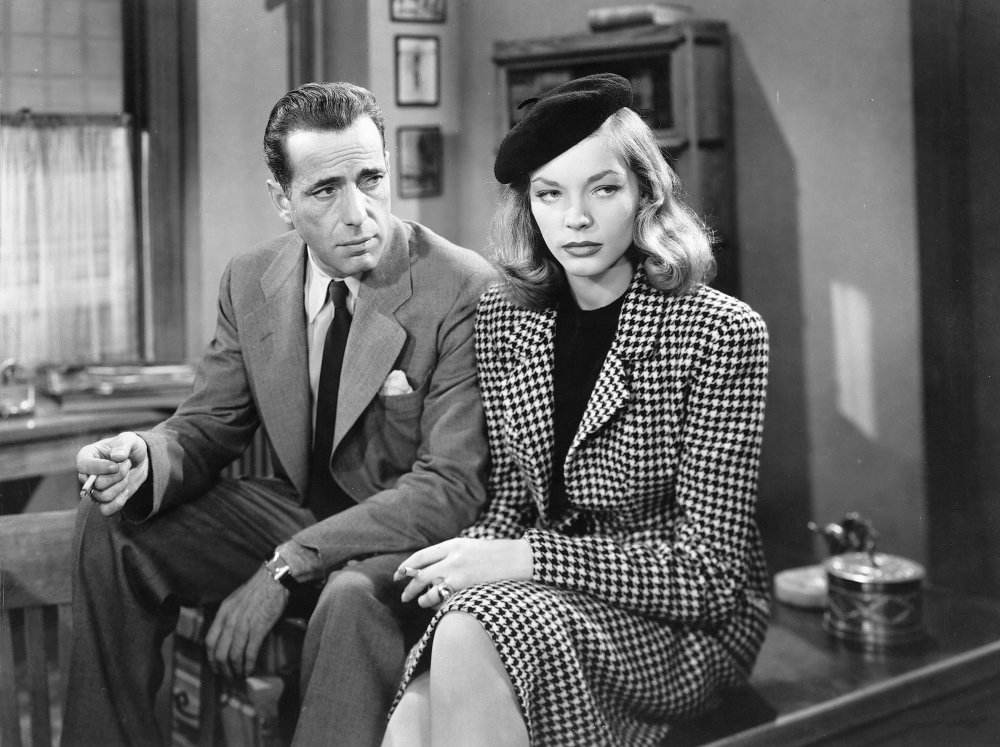
The Big Sleep (1946)
So Slim’s years stretch from Cary Grant teasing Jean Arthur in Only Angels Have Wings (1939) to Red River’s Joanne Dru, who starts off with Clift by slapping him in the face. In the middle there is the timeless screwball bickering of Bogart and Bacall, perhaps the sexiest talk in an American movie to this day. Hawks could do a two-shot of a man and a woman – with her rubbing at her knee (call it her lower thigh) and him telling her to scratch – that any halfway sane censor would have stopped. And Slim presided over such relationships and scenes, though she saw the colder side of Hawks that was hidden on screen. She also realised why he had been at the Clover Club that night: he was a chronic gambler. (No one knows the inside story of Hollywood without understanding the gambling.)
“I don’t know which was more unpleasant, Howard’s gambling or his infidelity,” Slim wrote in her memoirs. “Beneath that jaunty exterior, I think there was a great deal of sexual confusion and insecurity within Howard. When I look at the role of sex in his films and compare it with his life, it’s very interesting. The love scenes in the movies are invariably the same. There’s a terrible fight, the woman insults the man, he insults her back, she insults him again, and then suddenly they’re in each other’s arms and slashing round in the hay. This scenario was, I think, a way for Howard to put sex on the screen that didn’t make him want to gag. In his own life, he had a very tough time with tenderness or sentimentality. Even at the height of our courtship he was a tentative partner. Sex was simply a physical need that had no relation to the person he was with.”
Red River was to have been the making of them. In the Slim years Hawks had prospered. With hit after hit his salary rose; Red River was his own production, and he hoped to clean up. But the expenses on the picture got out of hand, and then Slim left him for Leland Hayward. Hawks’s salary was deferred against profits on the film, and the profits weren’t declared for a few years. The divorce was a long-drawn-out financial quarrel in which Hawks resisted paying child support for Kitty.
As Todd McCarthy puts it: “Hawks’s behaviour in relation to Slim and Kitty is hard to fathom, although it certainly stemmed from some combination of arrogant stubbornness, a conviction that he needn’t pay since Leland Hayward and Slim had far more money than he did, a lack of liquid cash and a lingering resentment of Slim for having left him. Relations between the two were strained when they existed at all, and Hawks undoubtedly knew that Slim bad-mouthed him to her show business and society friends. Slim remained very close with Bacall, Bogart and Hemingway, whereas Hawks did not.” Bogart may have known how much Hawks went after Bacall; Hemingway could not forget that his most political novel had been turned into an airy fantasy.
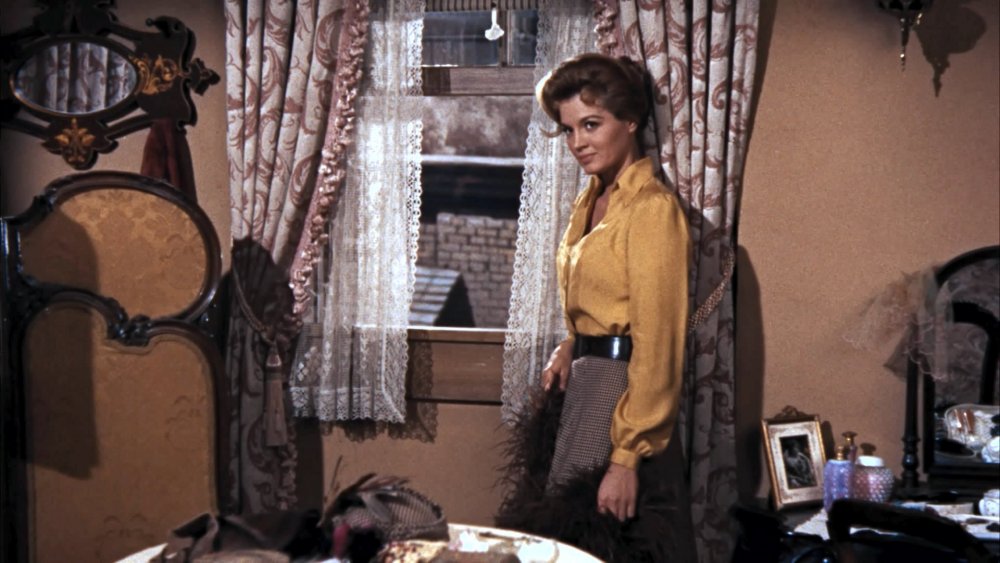
Rio Bravo (1958)
But the new Hawks season may be the occasion for a reappraisal. There was a time when it was stressed how Howard Hawks had flown planes and driven fast cars – how he made films about men doing a dangerous job with laconic professionalism. There was a suggestion of realism. In fact he re-enacted a dream, with hard-boiled dialogue and allegedly blunt confrontations. Laconic was like italic. He made absurdist, floating comedies (The Discreet Charm of the Cowboys, perhaps, with the herd never reaching a railhead?) in which men pretended to be strong and the women challenged them and then subsided. It’s like Rio Bravo (1959), where Angie Dickinson tells John Wayne not to mess up her life with his preconceived notions, talks him into a heap of wet laundry, but ends up guarding his door and wearing tights for him.
By the time I met Slim she was no longer slim, but she was great fun and a storyteller, who gave not the least hint she was dying. I got to see her by sending her a piece on Red River written for this magazine (in 1977) – a serious, heartfelt essay, though it did realise that the strenuous cattle drive was usually the same valley shot from different angles. Slim thought Howard would have liked the piece – he admired admirers. She was fond of him again by then, I think, though he was dead.
Then, gently, she tried to explain the kind of man Howard Hawks was: talented, cold, a fantasist, a gambler. I believe that is film commentary, and an insight into how American films functioned once upon a time. I doubt Hawks liked being laughed at in life, but he was a fabulous poker-faced comedian who dreamed the same dream over and over again – in which a man and a woman play word games and then decide they are in love. Until the next picture. The reason Walter has lost Hildy in His Girl Friday is to permit the fun of winning her back again.
-
The Digital Edition and Archive quick link
Log in here to your digital edition and archive subscription, take a look at the packages on offer and buy a subscription.




